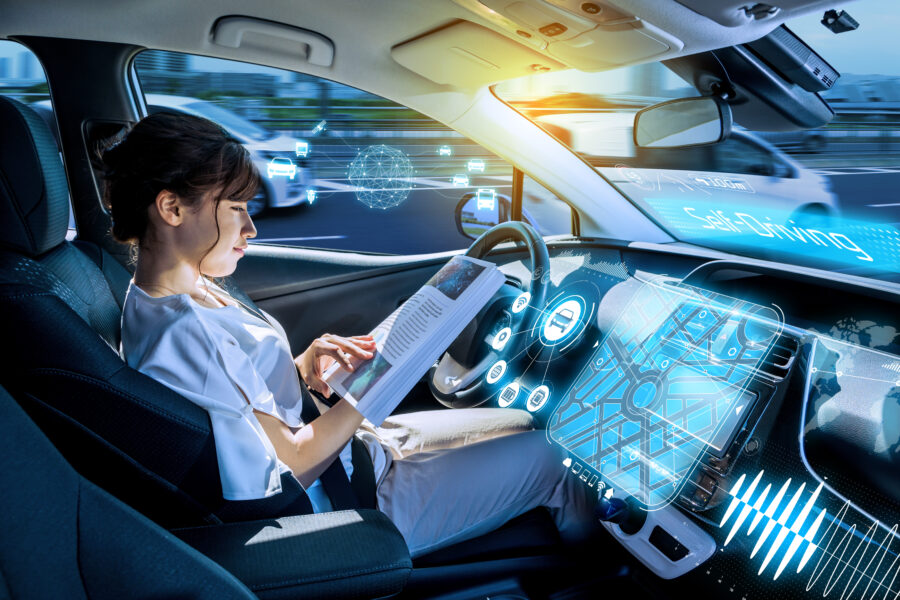"Steering into the Future: The Magic of Self-Driving and Self-Parking Cars"
Welcome to the age of automotive wizardry, where cars don’t just drive—they think, park, and navigate like seasoned pros, all without a human hand on the wheel! Self-driving and self-parking features are revolutionizing how we move, blending cutting-edge tech with a promise of safer, smarter, and stress-free journeys. Buckle up as we explore the nuts and bolts of this game-changing technology, from sensors to software, and peek into its dazzling future.
The Brains Behind the Wheel: How Self-Driving Works
Self-driving cars, or autonomous vehicles, are like rolling robots, powered by a symphony of hardware and artificial intelligence (AI). Here’s the lineup:
1. Sensors Galore: Cameras scan for lane lines, traffic signs, and pedestrians. LIDAR (Light Detection and Ranging) fires laser beams to map the world in 3D, while radar tracks objects through rain or fog. Ultrasonic sensors handle close-range detection, perfect for tight spots.
2. AI Powerhouse: Machine learning and deep neural networks, trained on millions of miles of driving data, let the car recognize patterns—think jaywalking pedestrians or erratic drivers. Software fuses sensor inputs (a process called sensor fusion) to plot safe paths and make split-second decisions.
3. Connectivity: Vehicle-to-Everything (V2X) tech lets cars chat with other vehicles, traffic lights, and the cloud for real-time updates on traffic or hazards.
The Society of Automotive Engineers (SAE) ranks autonomy from Level 0 (no help) to Level 5 (full control, anywhere, anytime). Most cars today, like Tesla’s with its Full Self-Driving (FSD) beta, hover at Level 2 or 3—partial or conditional automation—requiring human oversight. Waymo’s robotaxis, though, are cruising at Level 4 in cities like Phoenix, fully driving in defined zones.
Self-Parking: Your Car’s Inner Valet
Parallel parking nightmares? Gone! Self-parking, a star feature of autonomous tech, lets your car slide into spots with precision. Here’s how it dazzles:
1. The Tech: Ultrasonic sensors and cameras scout the surroundings, measuring spaces. Algorithms calculate the perfect angle and trajectory. The car then steers, accelerates, and brakes—some even let you step out and watch via a smartphone app.
2. Real-World Wins: BMW’s Remote Valet Parking System parks in tight garages, while Ford’s Active Park Assist nails parallel spots. Tesla’s “Summon” feature takes it up a notch, letting your car roll to you from a parking lot, dodging obstacles like a pro.
3. Benefits: No more dings, less stress, and time saved—especially in crowded urban jungles. A 2023 study by the National Highway Traffic Safety Administration (NHTSA) noted that parking mishaps drop by over 70% with automated systems.
The Road Ahead: Promises and Pitfalls
Self-driving and self-parking tech aim to cut accidents—human error causes 90% of crashes, per a 2021 IIHS report—boost fuel efficiency, and free up time. Imagine sipping coffee while your car parks itself at the mall! As of June 05, 2025, companies like Waymo and Cruise are expanding Level 4 zones, and Tesla’s FSD inches closer to full autonomy.
But challenges loom:
1. Safety: Edge cases—think sudden roadblocks or blizzards—test AI limits.
2. Rules: Laws lag, with countries still drafting standards for liability.
3. Ethics: Who’s to blame in a crash? How does a car choose between risks? These questions linger.
Self-driving and self-parking tech isn’t just a feature—it’s a leap toward a future where roads are safer, traffic flows smoother, and parking woes vanish. From LIDAR’s laser precision to AI’s brainy decisions, this tech is steering us into a new era. So, next time your car parallel parks like a champ or cruises hands-free, tip your hat to the sensors and code making it happen. The journey’s just begun—where will your car take you next?


No comments: